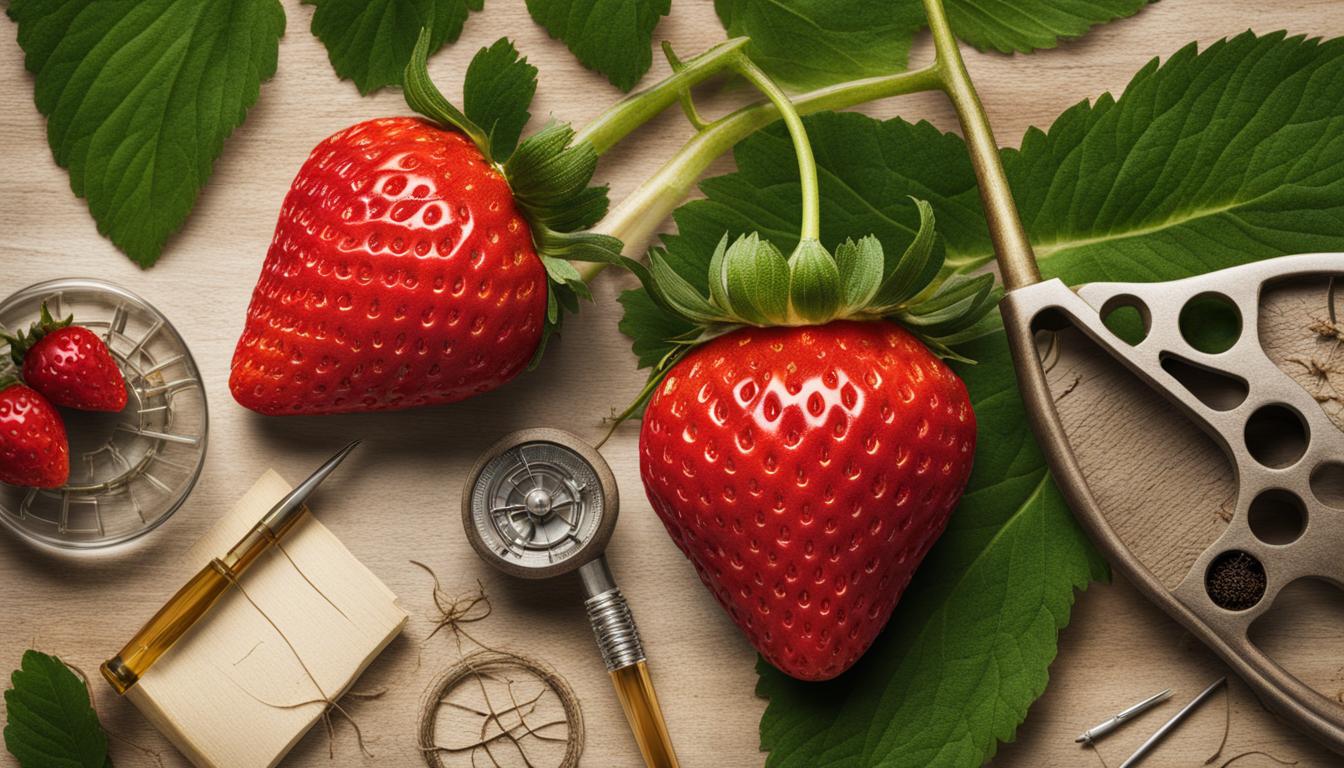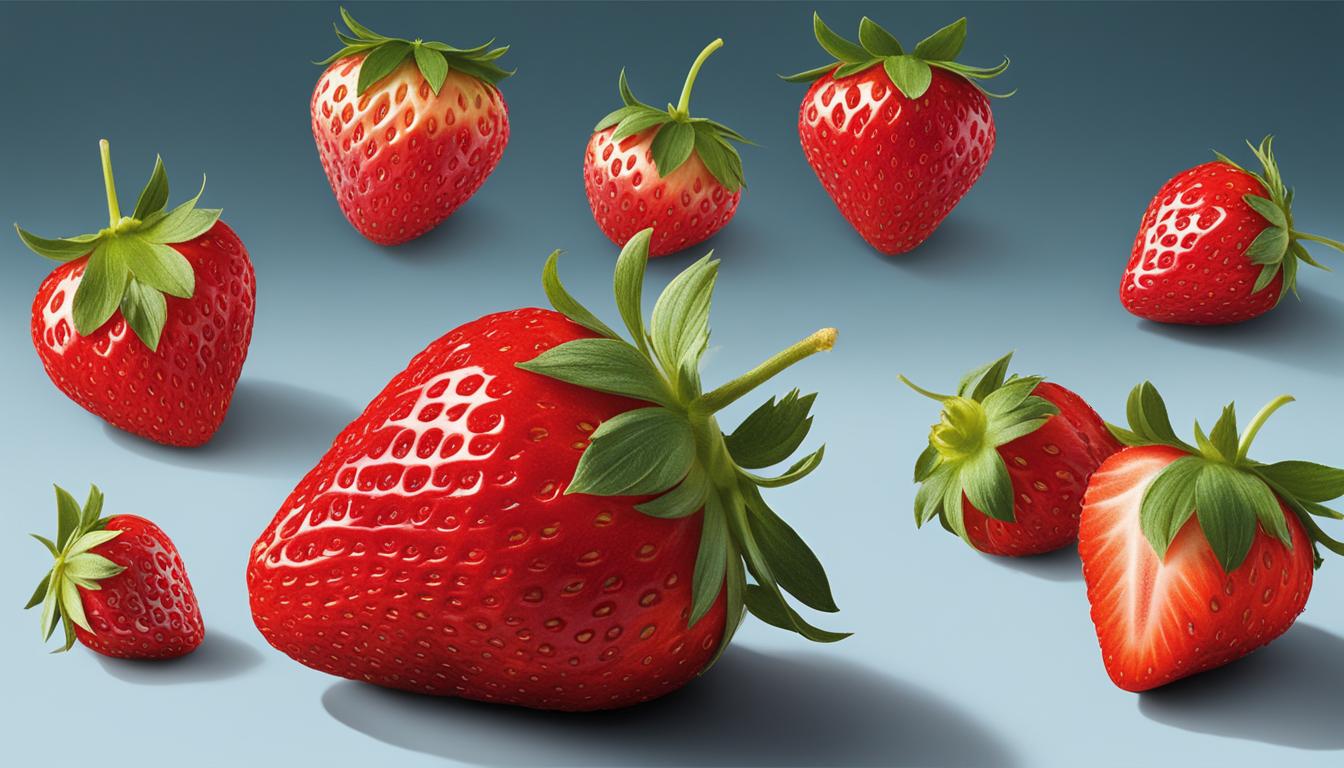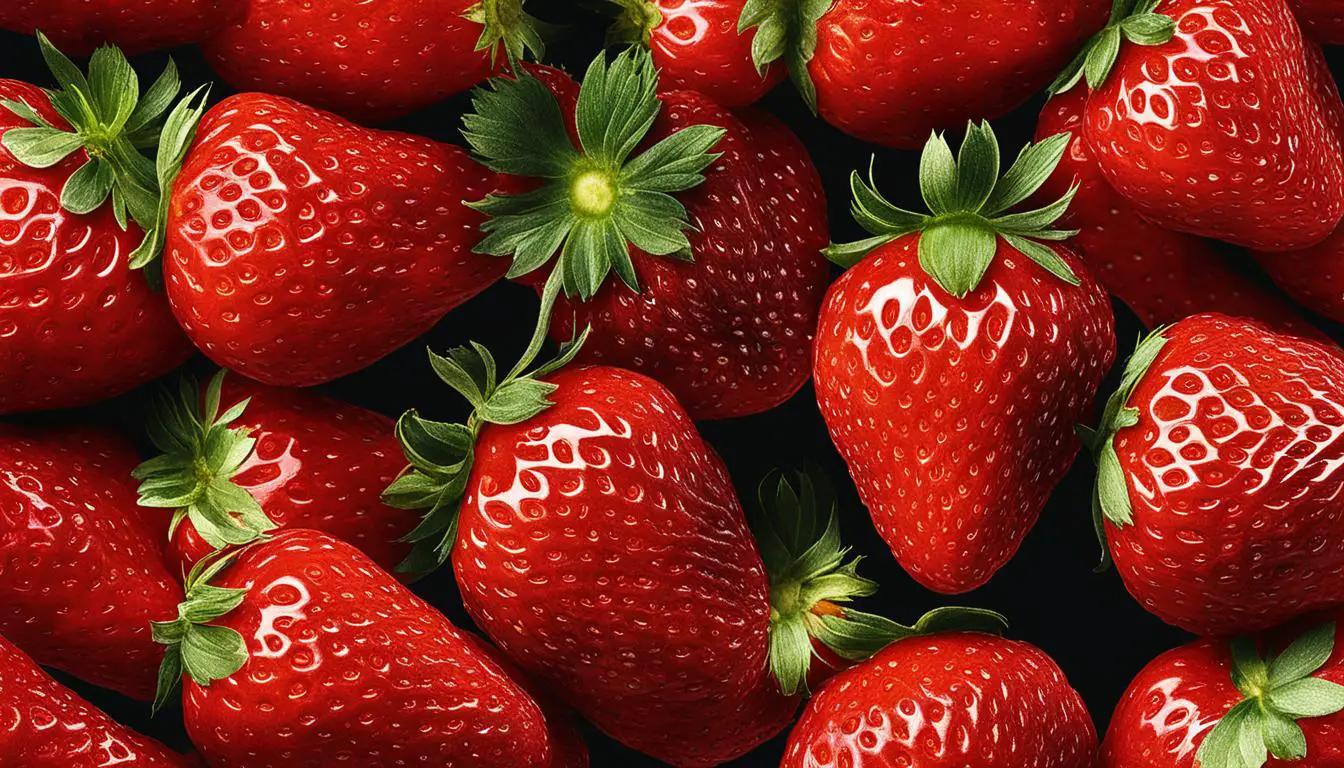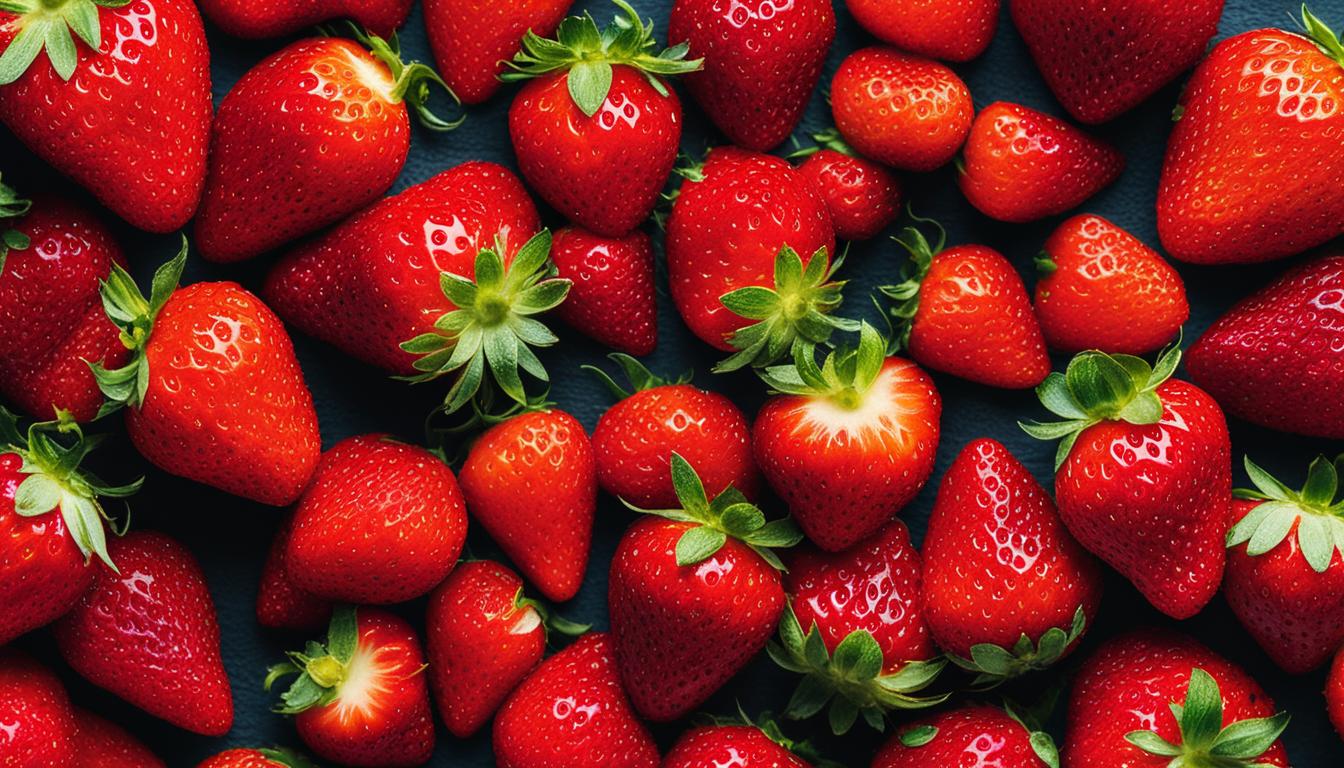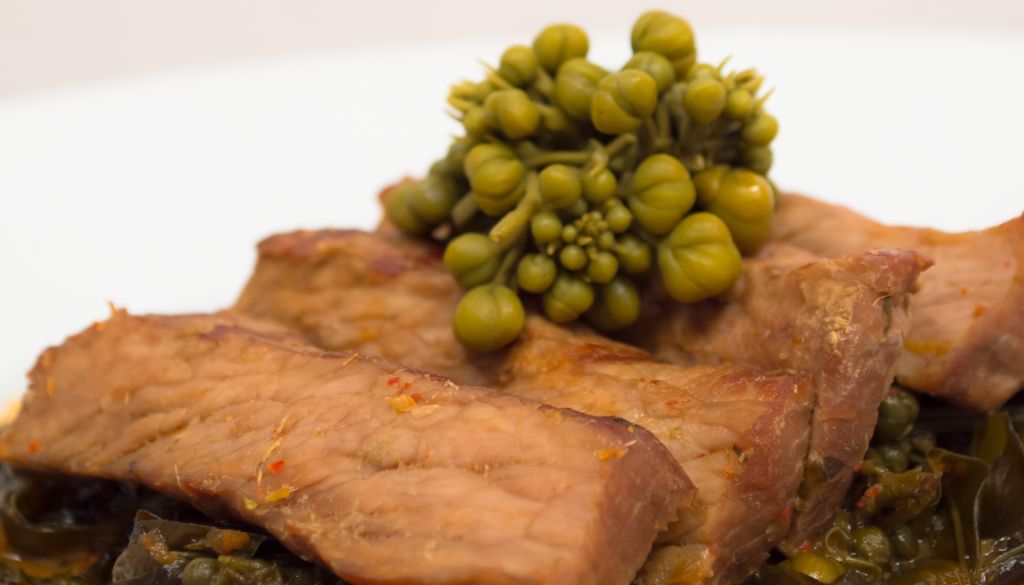Hello, readers! Today, let's dive into the story behind our beloved strawberry. Have you ever wondered where it comes from and how it became so popular? In this section, I will take you on a journey through strawberry history and discover its fascinating origins.
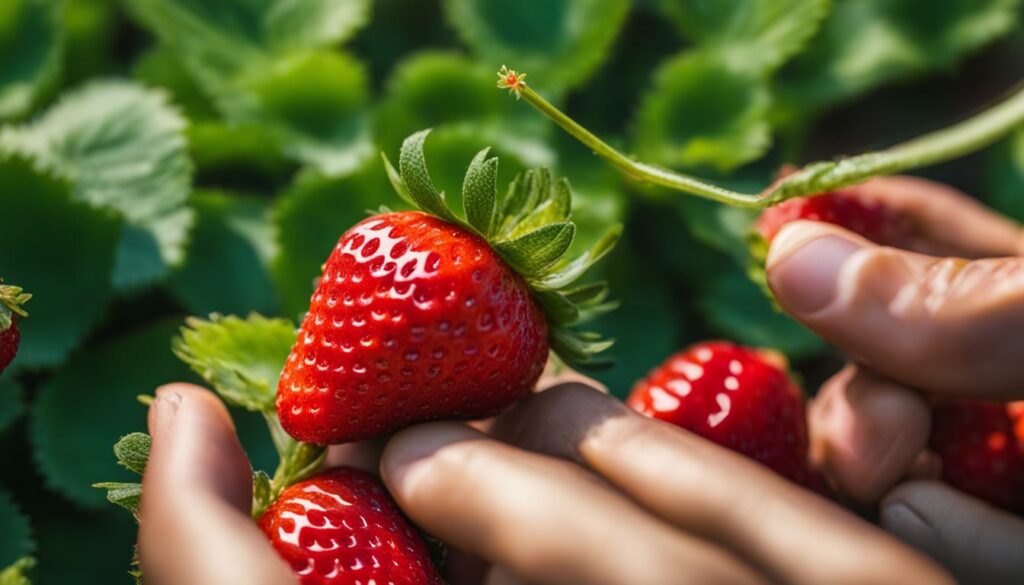
Índice
Discover the origin of the strawberry: a journey through history
The oldest records of the strawberry cultivation date back to the Neolithic period in Europe. Since then, strawberries have been cultivated by farmers around the world, from the Americas to Asia.
Over time, new strawberry varieties were developed and the fruit became a delicacy in many cultures. But despite its popularity, many people still don't know where it came from and how it became so loved.
So let's start our journey into history and find out what is the origin of strawberries.
Main conclusions:
- It is a great snack or breakfast option that is packed with nutrients and will help satisfy your hunger. Plus, it’s easy to make and can be customized to your liking. strawberry cultivation dates back to the Neolithic period in Europe.
- Strawberries have become a delicacy in many cultures around the world.
- Many people don't know where strawberries came from and how they became so popular.
The beginning of strawberry cultivation
The beginning of strawberry cultivation It dates back to the 17th century in France, where the fruits were grown in gardens for personal consumption. From the 18th century onwards, the first farmers began to cultivate strawberries on a large scale and sell them in local markets.
The technique used by the first farmers was reproduction by cuttings, which consisted of cutting a part of the stem with roots and planting it in fertile soil. Later, other techniques were developed, such as seed propagation and the use of greenhouses to control the climate and extend harvest time.
Over the years, strawberry cultivation has spread throughout the world, adapting to different climates and soils. Today, we can find strawberry plantations in several countries, such as the United States, China and Brazil.
In Brazil, strawberry cultivation began to be developed in the 1930s, in the South and Southeast regions. Currently, the country is one of the largest strawberry producers in the world, with emphasis on the states of São Paulo, Minas Gerais and Rio Grande do Sul.
Strawberry cultivation in Brazil is carried out in different regions, from the mountains to the plains. Brazilian producers use different cultivation techniques, such as growing in pots and raised beds, to guarantee fruit quality and increase productivity.
Strawberries are a fruit of great importance for the Brazilian economy and for the population's diet. In addition to being consumed fresh, it is used in the production of jams, ice creams, cakes and other delicious desserts.
Strawberry varieties around the world
Strawberries are grown in many regions of the world and there are many different varieties to enjoy. Each variety has its own characteristics, such as flavor, texture, color and size.
One of the most popular varieties is the Camarosa strawberry, grown in regions of Brazil, Argentina, Chile and the United States. It is known for being large, sweet and fragrant.
Another well-known variety is the Albion strawberry, originating in California, in the United States. It is a firm and sweet strawberry, with a citrus aroma.
In Japan, the Amaou strawberry is grown, a large, sweet variety with a strong perfume. In Europe, there is the Mara des Bois strawberry, grown in France, which is small and fragrant.
In Brazil, in addition to the aforementioned Camarosa, there are other varieties cultivated, such as the Oso Grande strawberry, the Dover strawberry and the Sweet Charlie strawberry.
The choice of strawberry variety depends on personal taste and intended use. Some varieties are better for making jam and others for eating raw. Some are more resistant to transportation and others have a sweeter flavor.
Now that you know some of the main strawberry varieties around the world, try to taste them and discover your personal preferences.
Health benefits of strawberries
Strawberries are not only delicious, but they are also considered one of the healthiest fruits in the world. They are rich in antioxidants, fiber, vitamins and minerals that can help prevent various diseases.
Regular consumption of strawberries can bring several health benefits, including:
- Prevention of cardiovascular diseases: The antioxidants present in strawberries help reduce the risk of heart disease by lowering bad cholesterol and improving blood circulation.
- Strengthening the immune system: Strawberries are rich in vitamin C, which is important for immune function and helps prevent infections.
- Prevention of degenerative diseases: The antioxidants present in strawberries help protect the body's cells against oxidative damage, preventing diseases such as Alzheimer's and Parkinson's.
- Blood sugar regulation: Strawberries contain fiber and antioxidants that help regulate blood sugar levels, preventing diabetes.
Furthermore, strawberries can be used in different ways in cooking, bringing flavor and benefits to different recipes. They can be consumed naturally, added to salads, smoothies, yogurts and desserts.
“Strawberries are an excellent option for those looking for a healthy and tasty diet. With their numerous health benefits and versatility in cooking, they can be included in different dishes for a balanced diet.”
Curiosities about strawberries
Strawberries are one of the most popular fruits in the world and are cultivated in many countries, including Brazil. In addition to being delicious, strawberries also have many interesting facts that you probably don't know about. In this section, we will share some of the most interesting facts about strawberries.
- Fun fact 1: Did you know that strawberries are not actually a fruit? In fact, the strawberry is a “false fruit” because the seeds are on the surface of the strawberry, instead of inside, as is common in other fruits.
- Fun fact 2: Strawberries are rich in vitamin C, and one cup of fresh strawberries contains about 149% of the recommended daily dose of this vitamin.
- Fun fact 3: The cultivation of organic strawberry It has become very popular in recent years, as it is healthier and more environmentally conscious. When grown organically, strawberries are not exposed to pesticides or other harmful chemicals.
- Fun fact 4: The strawberry seasonality This means it can only be found at certain times of the year. In Brazil, the strawberry harvest occurs mainly at the beginning of the year, between December and March.
- Fun fact 5: Did you know that strawberries can be used to make medicine? Some substances found in strawberries are known to have anti-inflammatory and antioxidant properties, making them a popular option for treating chronic inflammatory diseases.
These are just some of the fascinating facts about strawberries. Whether you're a strawberry lover or curious about fruits, these facts are sure to fuel your passion for this climbing fruit.
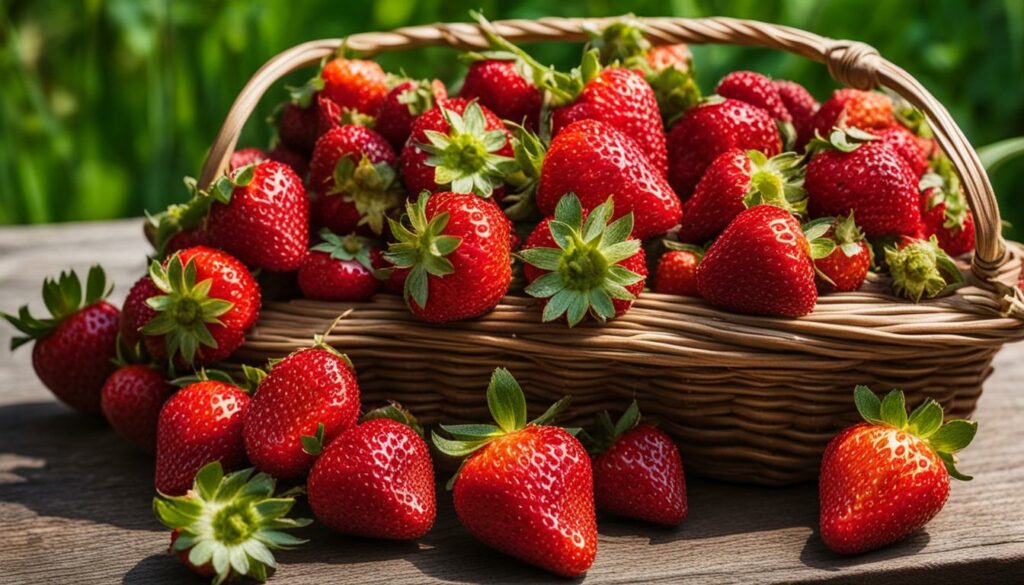
Conclusion
After exploring the origins, cultivation, varieties, benefits and curiosities of strawberries, it's time to talk about the presence of this fruit in Brazil.
Strawberry production in Brazil
Brazil is one of the largest strawberry producers in the world, with emphasis on the South and Southeast regions of the country. The states of São Paulo, Minas Gerais, Rio Grande do Sul and Santa Catarina are the main producers, followed by Paraná and Rio de Janeiro.
The cultivation of strawberries in Brazil It began at the end of the 19th century with the arrival of European settlers, who brought fruit seedlings to the country. Since then, strawberries have adapted very well to the Brazilian climate and soil, becoming a highly valued product in the domestic and foreign markets.
The appreciation of strawberries in Brazil
In Brazil, strawberries are greatly appreciated for their sweetness and unique flavor. It is used in various recipes, from desserts to savory dishes, such as salads and meat sauces. In addition, it is possible to find organic strawberry options at specialized fairs and markets.
However, it is important to remember that strawberries are seasonal fruits, being more available during the winter months and, therefore, it is important to take advantage of the season to enjoy this delight.
In short, strawberries have a special place on the table and in the hearts of Brazilians. Take the opportunity to try different recipes and varieties of this versatile fruit.
FAQ
What is the origin of the strawberry?
The strawberry is native to temperate regions of the northern hemisphere, more specifically Europe and the Western Asia region.
How did strawberry cultivation begin?
Strawberry cultivation began in Europe in the 15th century. Initially, plants were grown in gardens, but with the advancement of agriculture, techniques for large-scale cultivation were developed.
What are the strawberry varieties around the world?
There are several strawberry varieties around the world, each with its unique characteristics. Some of the best known are the Fragaria ananassa (common strawberry), Fragaria vesca (wild strawberry) and Fragaria moschata (wild strawberry) varieties.
What are the health benefits of strawberries?
Strawberry is a fruit rich in antioxidants, vitamins and minerals. It can help prevent cardiovascular diseases, strengthen the immune system and contribute to skin health.
What are some interesting facts about strawberries?
Interestingly, the strawberry is not a true fruit, but rather a fleshy receptacle that contains several seeds. Furthermore, the organic strawberry is grown without the use of chemicals, and the strawberry seasonality affects your availability throughout the year.
What is the presence of strawberries in Brazil?
Strawberries are grown in different regions of Brazil, mainly in states such as São Paulo, Minas Gerais and Santa Catarina. The fruit is appreciated by the Brazilian population and used in various culinary recipes.
Paulo Ribeiro, an Information Technology consultant, is passionate about cooking and gastronomy. Her true passion lies in exploring the stories behind the recipes and ingredients. At “Cozinha da Vê”, he shares his culinary discoveries, tested recipes and historical insights, creating a unique journey that combines technology and flavor.
